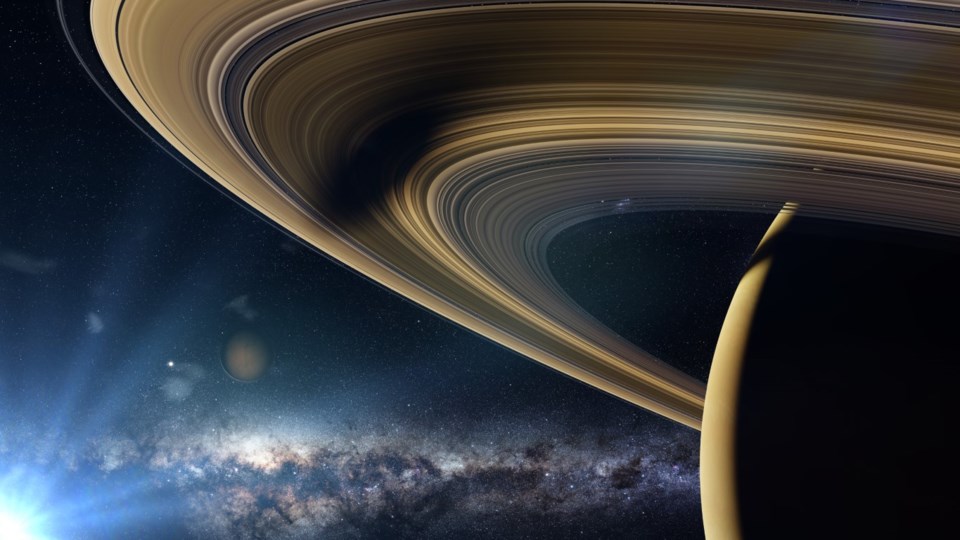The moon is nearly full when July begins. Notable is the star Antares July t, as it is 1.5 degrees south of the moon on that day. Antares is quite red, so should be easy to spot near the white disk of the moon. Full moon is on Monday, July 3. On the following day, the moon reaches perigee (closest to Earth) of 360,149 kilometres. July 7 sees Saturn three degrees north of Luna in its last-quarter phase, and July 8, Neptune is 1.7 degrees north, both planets coming into view shortly after midnight. July 11 and 12, respectively, Jupiter and Uranus are two degrees south of the moon, again coming into view in the very early morning. The moon is new July 17. July 19 sees Mercury in the evening sky four degrees south of a thin crescent moon, followed by Venus, then Mars on the succeeding evenings — the three planets are tightly grouped then, which could make for a good photo opportunity. July 28t, Antares once again enters the picture, 1.3 degrees south of the waxing gibbous moon.
Mercury begins the month July far side of the sun, but by July 8, the speedy planet reaches greatest latitude north — from then until the end of July is a good time to spot Mercury, hugging the horizon after sunset. Use bright Venus as a finding aid, Mercury will be about 20 degrees west—the distance between your thumb and outstretched pinky finger at arm’s length. July 15, Mercury is 0.2 degrees north of the Beehive Cluster (M44). July 19, the thin crescent moon glides by four degrees to the north. The bright star Regulus, in the constellation Leo, the Lion, is almost occulted by Mercury, 0.1 degrees away July 28.
Venus continues as the Evening Star throughout July, shining as a beacon in the western sky. By July 7, Venus is at its greatest illuminated extent; even though it presents a thin crescent, it is much closer to us and appears much larger. The thin crescent moon passes Venus July 20, with Mars and Mercury in the frame.
Mars, in the western evening sky, is in Leo as the month opens, passing by Regulus July 7t at a short separation of 0.7 degrees. July 21t, the moon glides by three degrees to the north.
Jupiter rises close to midnight, shining brightly among the stars of Aries, the Ram. As noted above, the moon is two degrees north in the early morning of July 11.
Saturn is in retrograde motion, appearing to move westward among the stars of Aquarius. The Ringed Planet rises around midnight, so presents a good opportunity for binocular or telescopic views if the planet with its ring system and bright satellites. At least five of the eight bright Saturnian moons should be visible at any given time. The moon is 3 degrees south July 7th.
Uranus rises around 1 a.m., so is visible for about three hours just to the west of the stars of the Pleiades Cluster. Jupiter, a little further west, is a good guide to the bluish planet. The moon is nearby July 12th.
Neptune rises about 11 p.m. among the stars of Pisces, The Fish. It appears motionless against the background, and begins retrograding for the next several months.
On July 29, the south delta Aquariid meteors peak.
James Edgar has had an interest in the night sky all his life. He joined the Royal Astronomical Society of Canada in 2000, was national president for two terms, is now the editor of the Observer’s Handbook, and production manager of the bi-monthly RASC Journal. The IAU named asteroid 1995 XC5 “(22421) Jamesedgar” in his honour and in 2021 he was awarded a Fellowship of the RASC.



